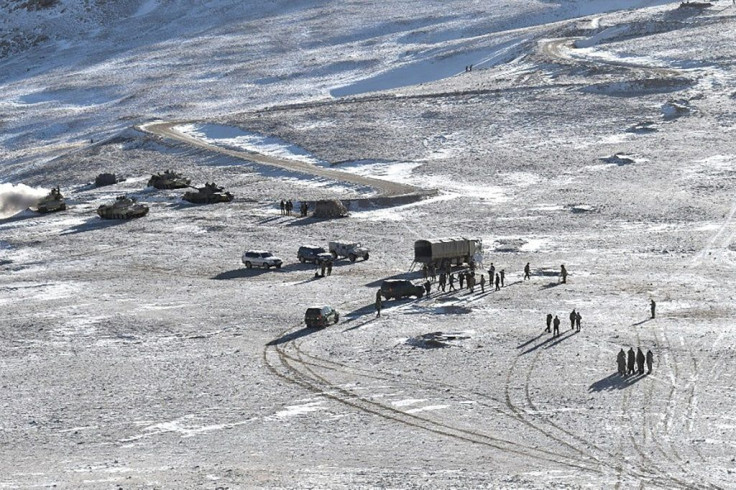A Message To US, India? China Test-Fires New Missile In High-Altitude Area Ahead Of Joint Drills
KEY POINTS
- The PLA test-fired a new surface-to-air missile at an altitude of 14,760 feet
- The HQ-17A missile can intercept aircraft, air-to-ground and cruise missiles
- The PLA conducted drills near its Himalayan border with India last year too
Days after the U.S. and India announced their annual joint military drill, China test-fired an updated surface-to-air defense missile on a high-altitude plateau in Xinjiang. A video of the missile test conducted Monday by the People's Liberation Army's Xinjiang Military Command was aired by the state broadcaster CCTV.
While the CCTV report said the "new type of surface-to-air missile" was tested at 4,500 meters (14,760 feet) altitude, defense analysts believe the weapons fired were the HQ-17A air defense missiles. These are a part of an integrated system that can fit in a single vehicle and is regarded as very mobile and accurate, reported South China Morning Post.
Interestingly, the test comes immediately after the U.S. and India announced this year's edition of their annual joint high-altitude drill "Yudh-Abhyas." A military observer said the test in Xinjiang was a show of deterrence in the countdown to the drills happening near India's border with China.
According to the CCTV report, the missile hit a target plane flying at a low altitude on its first attempt. In the second round of strikes, the operators managed to take "evasive action" despite strong electromagnetic interference from the aircraft.
Yue Gang, a retired PLA officer, told South China Morning Post that the drills involved a new type of HQ-17A short-range air defense missile, which could intercept targets like aircraft, air-to-ground missiles, and cruise missiles.
He added that while the basic version of the system (HQ-17) used a tracked chassis, the updated one (HQ-17A) used a wheeled chassis, he said. "Improvements have also been made to the performance of its search and radar tracking ability," Yue added.
He also believes the drills by the Xinjiang command, which oversees the disputed China-India border, hinted at Beijing's concern about the upcoming US-India exercises. "Now the PLA is carrying out high-profile fire strike exercises on the plateau, with the aim of deterrence and countermeasures. The US-India drill will show off forces at the gate of China. But no matter one country or many countries, China is not afraid to prepare for war," he said.
Though China is yet to make any official statement on the drill, Chinese mouthpiece Global Times ran a piece last year urging Indian media "not to get over-excited about the Indo-US military exercises as the Biden administration might consider using India as a pawn to contain China."
That said, many analysts believe the test fire was a routine exercise and had nothing to do with "Yudh Abhyas." Last November, the PLA conducted live-fire drills near its Himalayan border with India. Chinese troops then used a range of conventional weapons, from sniper rifles to vehicle-mounted remote-control weapon systems, mortars, grenade launchers, and anti-tank missiles, in a bid to show that it was ready for "high-altitude" warfare.

© Copyright IBTimes 2024. All rights reserved.





















